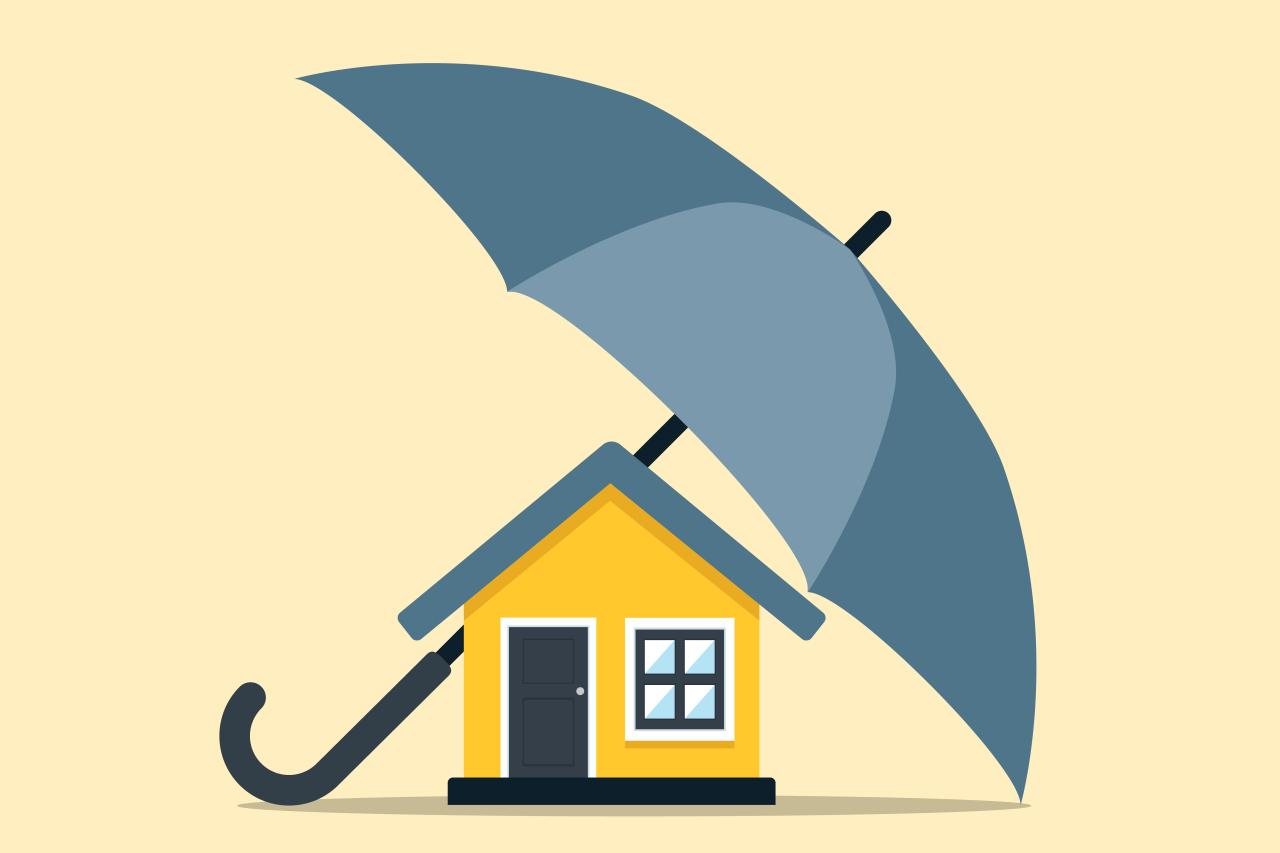Home insurance is a crucial safety net for homeowners, offering peace of mind in the face of unexpected disasters. Whether it's safeguarding against natural calamities or protecting your personal belongings from theft, having adequate home insurance ensures that your investment is secure.
Not only does home insurance provide financial protection, but it also plays a vital role in the overall stability of your life. Understanding the various types of policies, their coverage, and the factors that affect your premiums is essential to make informed choices and ensure you have the right coverage tailored to your needs.
Importance of Home Insurance

Key Factors Determining the Necessity of Home Insurance
Several factors underscore the importance of having home insurance. Assessing these aspects can help homeowners understand their unique risks and the suitability of specific policies:- Location: Homes situated in areas prone to natural disasters such as floods, earthquakes, or hurricanes face higher risks, making insurance essential for financial protection.
- Property Value: Higher property values usually correlate with increased potential losses in case of damage, emphasizing the need for adequate coverage.
- Mortgage Requirements: Lenders often require homeowners to carry insurance as a condition of obtaining a mortgage, ensuring their investment is protected.
- Personal Assets: The quantity and value of personal belongings influence insurance needs; homeowners with significant assets should consider comprehensive coverage.
- Local Crime Rates: Areas with higher crime rates may necessitate additional coverage against theft and vandalism to ensure protection against loss.
Home insurance is not just a policy; it is a lifeline that secures your investment and preserves your peace of mind in the face of unforeseen events.
Types of Home Insurance Policies
Home insurance policies come in a variety of types, each designed to meet different needs and circumstances of homeowners. Understanding these types is crucial for selecting the right policy that not only safeguards your property but also provides peace of mind. Each policy varies in the coverage it offers, making it essential to comprehend the distinctions among them.When evaluating home insurance, it's important to recognize the different policies available in the market. The most common types include HO-1, HO-2, HO-3, HO-4, HO-5, and HO-6, each serving unique purposes and offering a range of coverage options. Below is a closer look at the key policies, along with a comparison of their benefits and limitations.Detailed Overview of Home Insurance Policies
The following table Artikels the major home insurance policy types, alongside their respective benefits and limitations:| Policy Type | Benefits | Limitations |
|---|---|---|
| HO-1 (Basic Form) |
|
|
| HO-2 (Broad Form) |
|
|
| HO-3 (Special Form) |
|
|
| HO-4 (Renters Insurance) |
|
|
| HO-5 (Comprehensive Form) |
|
|
| HO-6 (Condo Insurance) |
|
|
"Understanding the specific types of home insurance policies is vital for ensuring appropriate coverage and protection for your property."
Factors Affecting Home Insurance Premiums

Location of a Home
The geographical location of a home plays a significant role in determining insurance premiums. Insurers assess various risks associated with specific areas, which can substantially affect the cost of coverage. Key factors include:- Natural Disasters: Properties located in areas prone to earthquakes, floods, hurricanes, or wildfires face higher premiums due to the increased risk of damage.
- Crime Rate: Homes in neighborhoods with high crime rates may incur higher premiums, as the likelihood of theft or vandalism increases the insurer's risk.
- Distance to Fire Services: Homes situated far from fire stations or water sources may see elevated premiums, reflecting the potential delays in emergency response.
Home’s Age and Condition
The age and overall condition of a home are critical in calculating insurance costs. Older homes often require more maintenance and may lack modern safety features, prompting insurers to assess them as higher-risk properties. Important considerations include:- Older Electrical and Plumbing Systems: Outdated systems can be prone to failures, leading to higher risks of fire or water damage, which can increase premiums.
- Structural Integrity: Homes with aging foundations, roofs, or materials may be at a higher risk for structural issues, prompting insurers to charge more for coverage.
- Upgrades and Renovations: Modern improvements, like updated roofs or security systems, can lower premiums by demonstrating reduced risk to insurers.
In summary, knowing the factors affecting home insurance premiums, such as location and home condition, can empower homeowners to make decisions that may lead to cost savings on their policies.
Claims Process in Home Insurance

Step-by-Step Process for Filing a Home Insurance Claim
The home insurance claim process typically involves several key steps. Following these steps accurately can significantly impact the outcome of your claim.1. Notify Your Insurance Company: Contact your insurer as soon as possible after the incident. Most companies have a dedicated claims hotline. 2. Document the Damage: Take photos or videos of the damage or losses. This visual evidence will be crucial for your claim. 3. Prepare a List of Damaged Items: Create a detailed inventory of all affected belongings, including their approximate value and purchase date. 4. Complete the Claim Form: Fill out your insurance company’s claim form thoroughly. Provide all requested information and be honest. 5. Submit Required Documentation: Send in all necessary documents, such as receipts, photos, and proof of ownership. 6. Stay in Communication: Maintain contact with your insurance adjuster. They may require additional information or documentation. 7. Receive a Claim Decision: After reviewing your claim, the insurer will inform you of their decision regarding coverage and payment. 8. Understand Your Settlement: If approved, carefully review the settlement offer and ensure it covers your losses adequately.Common Mistakes to Avoid When Filing a Claim, Home insurance
Filing a home insurance claim can be complex, and making mistakes may lead to delays or even denial of your claim. It is important to be aware of these common errors to enhance the likelihood of a successful claim.- Failing to document damages adequately can lead to disputes regarding the extent of your loss.
- Not notifying the insurer promptly may result in complications or denial of the claim due to delayed reporting.
- Underestimating the value of your belongings can impact the compensation you receive.
- Providing incomplete or inaccurate information on the claim form can lead to processing delays.
- Ignoring communications from your insurer can hinder the resolution of your claim.
Checklist of Required Documents and Information
To streamline the claims process, it is essential to gather all necessary documentation before submitting your claim. Here’s a checklist of the required items:- Claim Form: Completed and signed claim form as provided by your insurer.
- Proof of Ownership: Receipts, photos, or appraisals for damaged items.
- Inventory of Damaged Items: A detailed list describing each item, its value, and how it was damaged.
- Photos and Videos: Visual evidence of the damages or losses incurred.
- Police Report: If applicable, a report documenting theft or vandalism.
- Estimates for Repairs: Quotes from contractors or repair services if available.
- Communication Records: Any correspondence with your insurance company regarding the claim.
"Thorough documentation and timely communication are key elements in successfully navigating the home insurance claims process."
FAQ Summary: Home Insurance
What does home insurance typically cover?
Home insurance usually covers damages to your home, personal belongings, liability for injuries, and additional living expenses in case of displacement.
Is home insurance mandatory?
Home insurance is not legally required, but mortgage lenders often mandate it as a condition of financing.
Can home insurance policies be customized?
Yes, many insurers allow homeowners to customize their policies with additional coverage options to better fit their needs.
How can I reduce my home insurance premiums?
You can lower your premiums by increasing your deductible, improving home security, and bundling policies with the same insurer.
What should I do if my home insurance claim is denied?
If your claim is denied, review the denial letter, understand the reasons, and consider appealing the decision or consulting with an insurance expert.
The Galaxy S 10 Plus stands out with its impressive camera capabilities and sleek design, making it a popular choice among smartphone enthusiasts. With its powerful performance, it caters to multitaskers who need a reliable device for both work and play. As technology continues to evolve, Samsung's innovations remain at the forefront, ensuring users have access to cutting-edge features.
In addition to smartphones, Samsung is expanding its horizons with mobil Samsung , showcasing their ambition to revolutionize the automotive industry. Their commitment to integrating smart technology into vehicles promises a seamless driving experience, blending safety and entertainment. As more consumers lean towards tech-savvy solutions, Samsung's foray into cars reflects a significant shift in automotive trends.